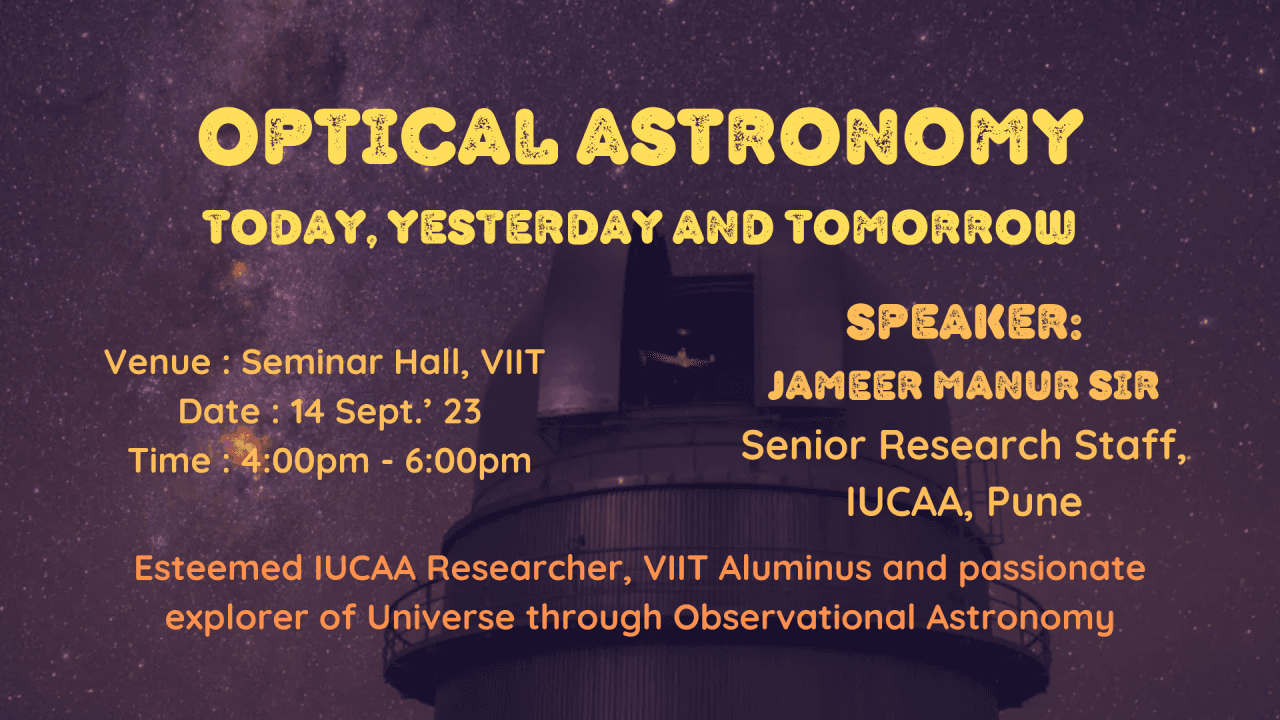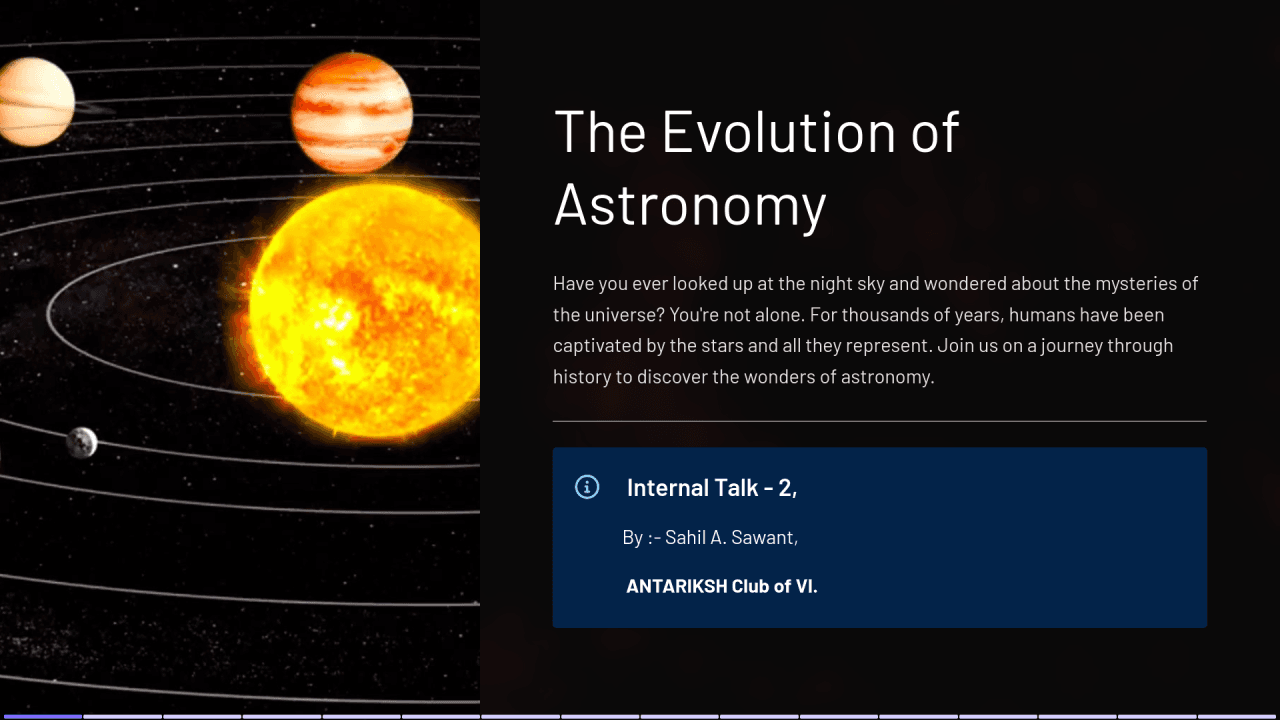On October 5, 2023, the Antariksh Club of Vishwakarma Institutes (VI) hosted a captivating guest lecture by Prof. Dhruba Saikia , Head of the Astronomy Centre for Educators at IUCAA, Pune, India (Inter-University Centre for Astronomy and Astrophysics). The event took place in Lecture Halls 1222 and 1224 on the Vishwakarma Institute Of Technology campus, and it centered around the theme of "Role of Technology in a Multi-Messenger View of our Universe." Prof. Saikia, an esteemed authority in the field of astronomy and astrophysics, provided attendees with a comprehensive understanding of the subject through an enlightening journey into the fascinating world of astronomy.

Know more about "Multi-Messenger Astronomy"
Event Highlights:
Ancient Astronomy: Prof. Saikia began by delving into the curiosity about astronomy in ancient civilizations, citing examples like the "Emu in the sky," a constellation in Aboriginal culture, visible in the autumn sky, to highlight humanity's age-old fascination with the cosmos.
The Definition of Science: The lecture explored the etymology of the word "science," deriving from the Latin word "Scientia," signifying knowledge, expertise, or experience. Prof. Saikia explained the difference between deductive processes (axioms and theorems) and inductive processes (observations and laws) in the scientific method.
Nasadiya Sukta: The audience was introduced to the Rig Veda's Nasadiya Sukta, a sacred hymn that contemplates the creation of the universe with the thought-provoking line: "But, after all, who knows, and who can say whence it all came, and how creation happened?" This demonstrated humanity's enduring interest in understanding the cosmos.
Collecting Information About the Universe: The discussion covered various methods of collecting information about the universe, including electromagnetic radiation, gravitational waves, high-energy particles, and neutrinos, enabling the study of celestial phenomena from diverse perspectives.
Observatories Across the Electromagnetic Spectrum: Prof. Saikia highlighted the existence of observatories worldwide that span the entire electromagnetic spectrum. He also showcased the James Webb Space Telescope (JWST) and shared the deepest infrared image captured by JWST.
Limitations of Human Vision: The speaker explained why our eyes are limited in perceiving the depth of the universe, owing to the size of our eyes, their coverage area, and exposure time. Technology plays a crucial role in extending our exploration beyond our sensory abilities.
Square Kilometer Array: Prof. Saikia introduced the Square Kilometer Array (SKA), a next-generation radio telescope poised to revolutionize radio astronomy.
Challenges of X-ray Telescopes: He posed the question of whether X-ray telescopes could be constructed like optical telescopes, revealing that polishing X-ray telescope mirrors to the required precision is a challenging endeavor.
Gamma Ray Bursts and Muons: Prof. Saikia discussed intriguing phenomena such as Gamma Ray Bursts and the use of muons in muography, a technique that allows us to peer inside structures such as pyramids.
Acknowledgments:
We would like to extend our gratitude to the following mentors who played a crucial role in making this event a success:
Jameer Manur Sir : Our mentor at IUCAA, whose unwavering support and guidance helped us navigate the challenges and triumphs of organizing this event.
Prof. Dr. Shipad Bhatlawande Sir : The Head of the EnTC Department, who graciously felicitated the honorable chief guest, Prof. Dhruba J. Saikia.
Prof. Shital Pawar madam : Who presented the chief guest with a vote of thanks, expressing our deep appreciation for his enlightening lecture.
We sincerely thank all our mentors for their invaluable support and contributions to this event.



Conclusion:
Prof. Dhruba J. Saikia's guest lecture provided an in-depth exploration of the pivotal role of technology in the field of astronomy. It encompassed the scientific process, the multitude of instruments and techniques used in modern astrophysics, and the historical and cultural dimensions of astronomy. The Antariksh Club expressed its heartfelt gratitude to Prof. Saikia for sharing profound insights and knowledge during the presentation. Those in attendance undoubtedly gained valuable information and perspective, fueling their curiosity about the wonders of the cosmos.



